Camouflage patterns are widely used in military uniform design, as well as to disguise the shape and/or speed of ground vehicles, ships, and aircraft. Analysts evaluating the effectiveness of these patterns should consider the impact of optical surface properties such as solar absorptivity, spectral emissivity and reflectivity on soldiers' contrast when compared to the radiance of their background (e.g., terrain, sea surface, or surrounding foliage). MuSES provides accurate simulations of infrared radiance for humans, vehicles, buildings, and other objects against a large variety of realistic background models (including faceted digital elevation maps and/or clutter such as trees). The image below shows a soldier in camouflage against a background. In the image on the left, the eye has a difficult time with the complex pattern and it becomes hard for the brain to identify the features of the soldier.
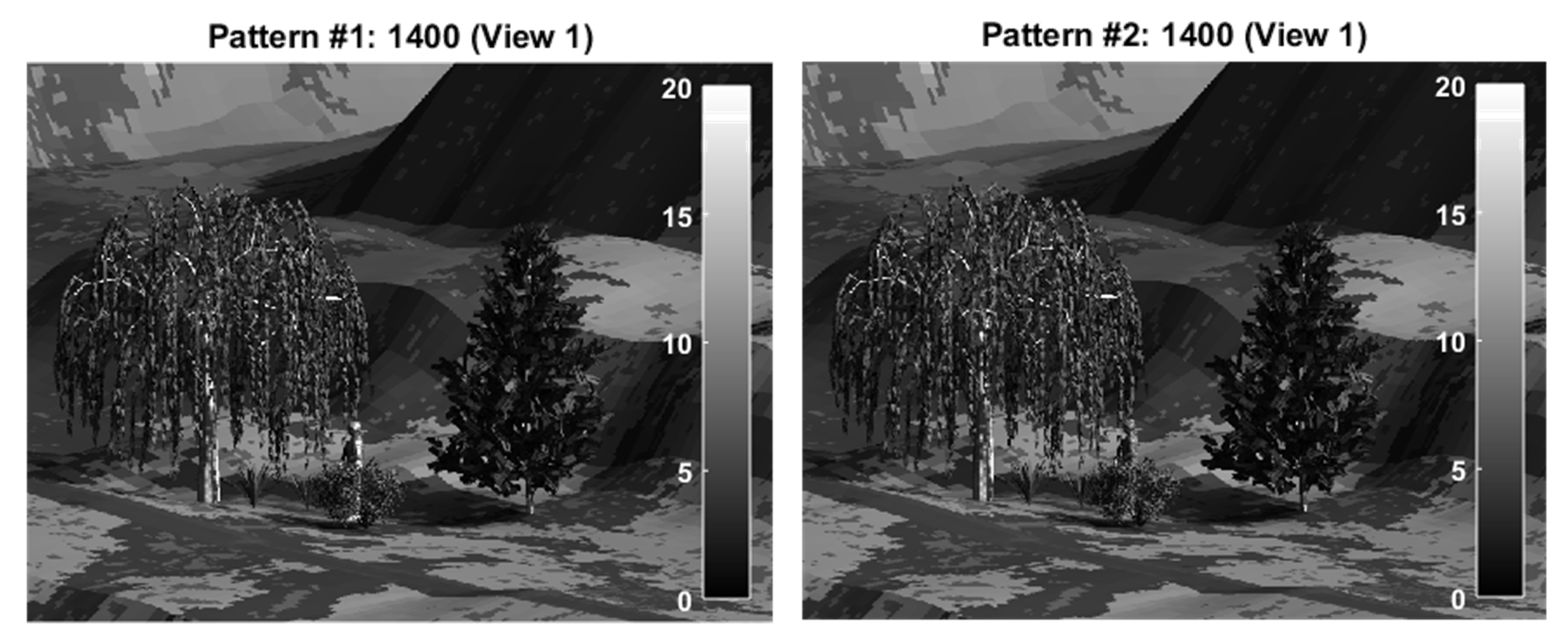
The texture mapping feature in MuSES reads textured geometry and maps paint definitions (detailed surface conditions) to RGB colors present in the texture image for an object. Before we get into how it works, and how we carry out the process, let’s consider a few examples to see how it can benefit a simulation program.
The six pairs of BRDM images below compare uniform carc green paint vs a simple camouflage pattern. The first pair of images shows the visible band colors rendered flat on the BRDM geometry. The second pair shows that the temperature results are largely similar between the two patterns, though the solar absorptivity variance in the camo pattern results in some hotter and cooler temperatures under strong solar loads with moderate winds.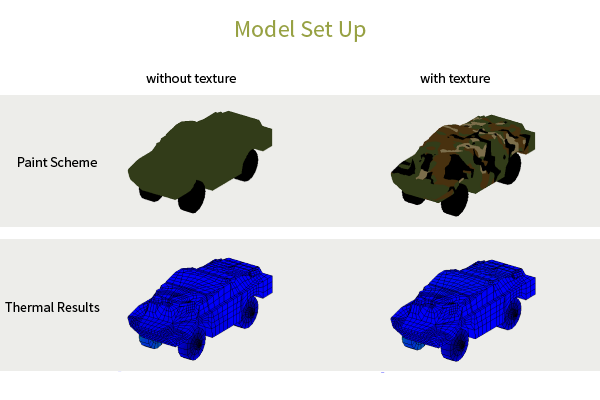
The third pair of images shows diffuse radiosity in the 3-5 micron band, and we see a significant divergence when using a camouflage pattern. The uniformly-painted vehicle roof (left) has a higher average radiance; this large surface area could be significantly improved with a more optimal camouflage pattern.
The fourth image shows the results in the 8-12 micron band, where solar reflectance is much less significant and surface temperature dominates the sensor-perceived radiance. Here we find the difference between homogenous green paint and a camouflage pattern to be even greater - the lower radiance of the uniform paint results in a large low-radiance area, which has less variation (or “texture”) and may be more detectable than the camouflaged vehicle.
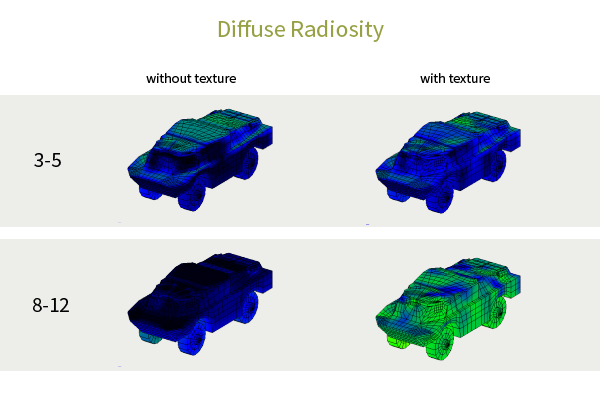
The fifth and sixth examples are rendered with directional bounces, so solar "glints" or cold sky reflections are included in the results. The conclusion: camouflage can play a very important role in the IR band, even as significant as in the visible band. The optimization of camouflage patterns for a particular vehicle or military uniform can be accomplished with MuSES minimizing contrast and matching one or more background types.
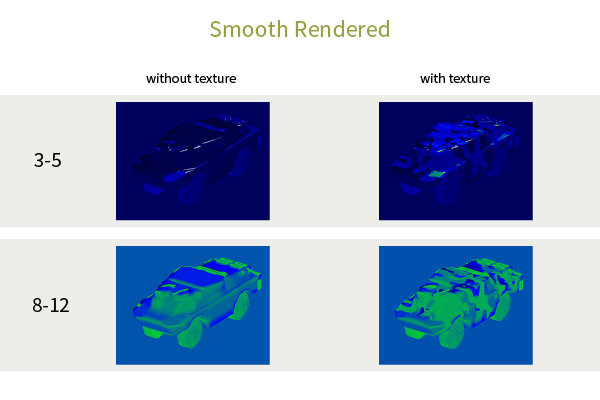
Having seen that camouflage patterning is often important, let's look at how it's handled in our software.
First, the camo pattern is generated in an external CAD program (e.g., Blender, Rhino) that supports image-based texture mapping and can export a textured .OBJ geometry file. In such a CAD package, various texture mapping techniques are available for projecting a 2D camouflage pattern onto 3D geometric descriptions. MuSES then read texture image files and the associated UV coordinates and store them with the vertices of the model geometry.
Once the texture file is read into MuSES, each color used in the camouflage pattern image is available for mapping to a surface paint definition. See the images below.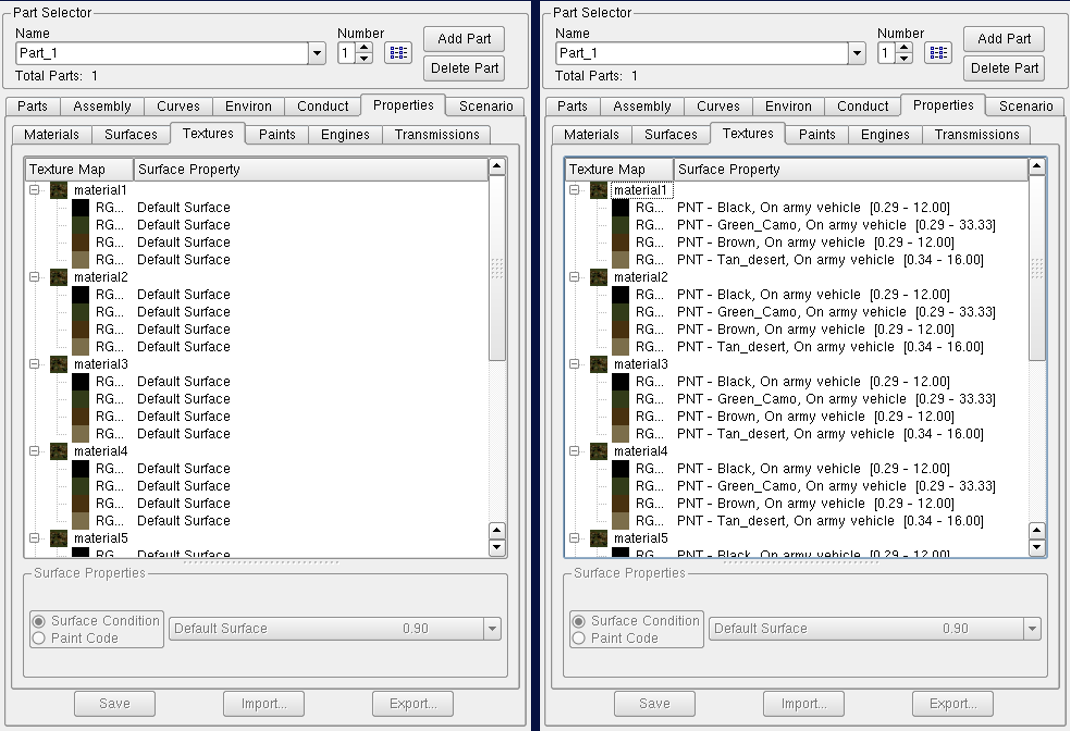
After mapping the paints to colors, we have a definition of surfaces that is both complete and linked to the camouflage image file.
A parametric analysis is then possible - we can test various camouflage patterns using a fixed set of paints, or we can use a single pattern and vary the "colors" (surface properties) by simply remapping different paints to the texture colors. A database of paints is included with MuSES; alternatively, custom paints can be defined by the user for proprietary surface coatings.
The model can then be run and rendered in various landscapes, weather conditions, and global locations to determine an optimal camouflage pattern and corresponding paint definitions.
If your team is considering a camouflage design and evaluation effort, we encourage you to contact our services team. We have extensive experience in developing paint configurations that minimize contrast. Contact us to discuss your application with an infrared analysis expert.
